On a Jeep Wrangler TJ, the hub bearings (also known as wheel bearings, or unit bearings) are a single sealed unit – this makes replacing them fairly easy, but does make things more expensive, since you have to replace the entire unit. Below I’ll go over how to replace them.
How do you know your hub bearings are bad? Normally you’ll hear a grinding, hum, or roar coming from a front wheel. You may also get some wobble, if the wheel bearings have too much play in them.
Replacing the hub bearings is a pretty straight forward process, and can be done in your driveway with regular hand tools (the only exception being a 36mm socket). I choose to use Timken hub bearings simply because I’ve read so many positive reviews.
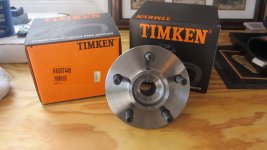
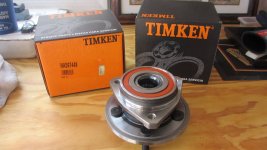
This is an exploded view of a Wrangler TJ wheel hub.
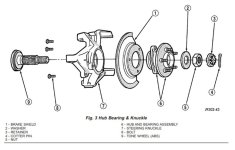
How do you know your hub bearings are bad? Normally you’ll hear a grinding, hum, or roar coming from a front wheel. You may also get some wobble, if the wheel bearings have too much play in them.
Replacing the hub bearings is a pretty straight forward process, and can be done in your driveway with regular hand tools (the only exception being a 36mm socket). I choose to use Timken hub bearings simply because I’ve read so many positive reviews.


This is an exploded view of a Wrangler TJ wheel hub.

- So, to get started, just jackup your Jeep.
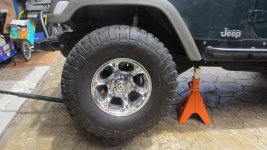
- Remove the wheel and brake caliper, being sure to support the caliper (don’t let it hang from the break line).
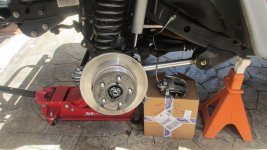
- This is what the hub / bearing assembly looks like
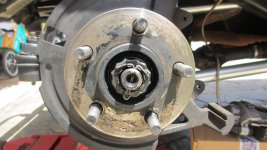
- With a pair of pliers, remove the cotter pin
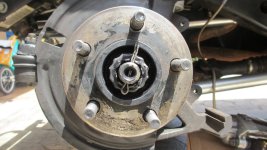
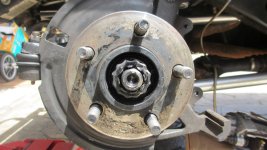
- With your hand, pull off the retainer
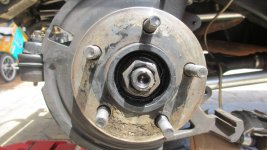
- Here is what the cotter pin and retainer look like
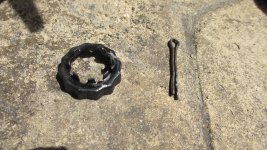
- Remove the wheel nut. Air tools make it easier.
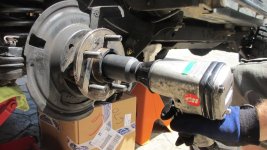
- Remove the washer
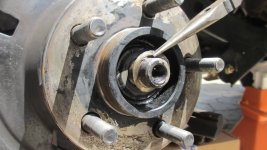
- Remove the three bolts holding the hub assembly on (I've backed them out a bit in the two photos below).
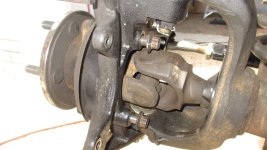
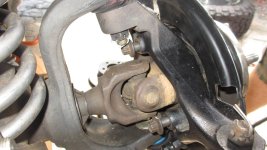
- Pull the hub assembly off with your hand
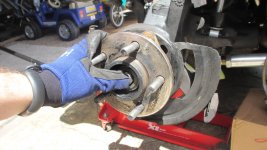
- At this point we begin reassembly. Make sure you install the brake shield facing the correct way, or else you’ll have to take everything apart again (ask me how I know).
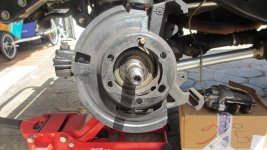
- Install the hub assembly, and tighten the three bolts that keep it in place.
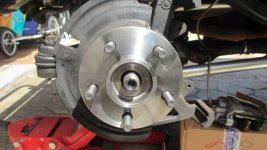
- Put the washer back on
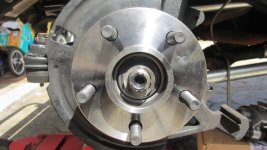
- Replace and tighten the wheel nut
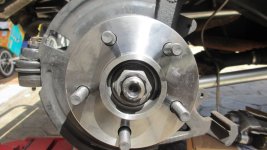
- Replace the retainer and install a new cotter pin, and put the brake rotor back on.
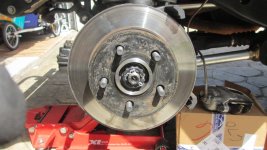
- Re-install the brake caliper
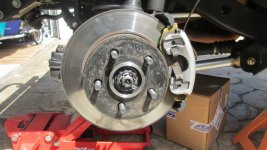
Last edited:



